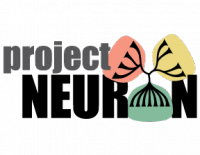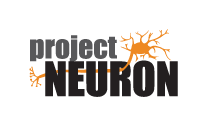How do small things make a big difference? Microbes, ecology, and the tree of life

Students engage in a series of inquiry-based activities in this unit, to learn about microbes from the three domains of life (eukaryotes, bacteria, and archaea). Beginning with an exploration of the technological advances that led to the current three-domain tree of life, students investigate how Carl Woese and research partners used molecular methods to discover the Archaea domain. After observing live microbial communities from a Winogradsky column, students develop a model of the matter and energy cycles within ecosystems that can be applied to biological communities, micro or macro. Through reading adapted scientific articles, students develop science literacy skills and discover the critical role of microbial communities in human health and development. Finally, students model the stability and change of these microbial ecosystems by analyzing published data on the effects of antibiotics on the native microbes of the human microbiome.
This unit connects to research conducted by Dr. Rachel Whitaker and members of the Whitaker Lab group at the University of Illinois.
-
Lesson 1: How did the tree of life change through history?
Students learn about the nature of science as they examine how models of the tree of life have changed through history. Students begin with an activity that introduces the classification systems of past scientists (including Carl Linnaeus, Ernst Haeckel, and Robert Whittaker) to recreate the historical timeline of different taxonomies using original scientific drawings and excerpts from scientists’ writings to support their model. For each different taxonomic model students examine, they address questions such as “What information did the scientist use to create this taxonomy?” and “What are some of the defining characteristics of each of the groups of organisms?” These progressions of scientific thought and models over time illustrate some key nature of science concepts: scientific knowledge is a result of human endeavors and has a history that includes the refinement of, and changes to ideas over time.
Updated in 2014 -
Lesson 2: What is the current tree of life model?
In this lesson, students take an in-depth look at the current molecular three-domain tree of life, a recent and significant scientific development. First, to model how molecular evidence is used to formulate a tree of life, students examine similarities and differences between simulated DNA sequences of a diverse set of organisms to determine relatedness. Students then engage in an important conversation about the use of the term “prokaryote” and how it can be problematic in light of Woese’s discovery of archaea and the new tree of life model. Finally, students read a news article about Carl Woese’s discovery of archaea and discuss different aspects of the nature of science illustrated by the story. Through these activities, the following nature of science concepts are addressed: new technologies advance scientific knowledge and science is subject to changes based on new evidence and/or reinterpretation of existing evidence.
Updated in 2014 -
Lesson 3: What are microbes?
This lesson defines the term “microbe” and introduces students to the diversity of microbes. Students first watch an engaging video that reviews some elements of the previous lessons about the place of microbes in the tree of life while making connections to what is to come as the unit continues to explore the different roles and ubiquity of microbes. The second activity scaffolds students’ concept of scale as they work with units and conversions to become more familiar with the microscopic scale. This concept of scale is then applied in the third activity where students make a “microbe mural”. To create the mural, students produce scaled up versions of different microbes and discuss aspects of microbial diversity such as their size, where they live, and their metabolic properties.
Updated in 2014Associated Media: -
Lesson 4: What does a microbial ecosystem look like?
Students continue their exploration of microbes by looking at how microbes interact with each other to form ecosystems. Students first discuss traditional food webs and ecosystems and then transfer that discussion to a microbial ecosystem contained in a jar, a Winogradsky column. Students create a model of nutrient cycling in the Winogradsky column and use their model to predict and explain different aspects of the ecosystem such as how perturbations to the system influence microbial populations. The lesson strives to alter students’ perception of what makes up an ecosystem, introduce metabolic diversity of microbes, and explore interdependence of populations.
Updated in 2014 -
Lesson 5: How do microbes interact with humans?
In this lesson, students are introduced to the various microbial communities that live within and on humans. With a video introduction to the human microbiome by microbiologist Bonnie Bassler, students discover the diverse and numerous microbes that call our body “home” and how much there is yet to discover about human-microbe interactions. In the lesson’s main activity, students begin by developing initial models of how they think a certain microbial community interacts with a specific body part or process. They then work in “expert” groups to read articles and analyze data pulled from current scientific research that describe that specific human-microbe interaction. After each group analyzes their specific reading and data, students get into “jigsaw” groups to synthesize information and develop a model that represents their collective knowledge of the human microbiome.
Updated in 2014 -
Lesson 6: What can happen when my microbiome is disturbed?
Integrating concepts from previous lessons, this lesson extends students’ thinking to consider what would happen to the composition of microbes in the human gut if a disturbance occurred. Building on ideas of microbial ecosystems, and the roles of microbes in the human body, students investigate a clinical trial in which patients with C. difficile infections (CDI) are treated with two different antibiotics. Students study data that show how the infection and antibiotics affect microbial communities in the human gut and how the disturbances connect to the recurrence rate of infection. Students then use their interpretations of the data as evidence to make and support conclusions about the best course of treatment for CDI. Finally, students further apply concepts of ecosystem dynamics and human-microbe interactions to compare two different approaches to treatment of bacterial infections: antibiotics and fecal transplants.
Updated in 2015

